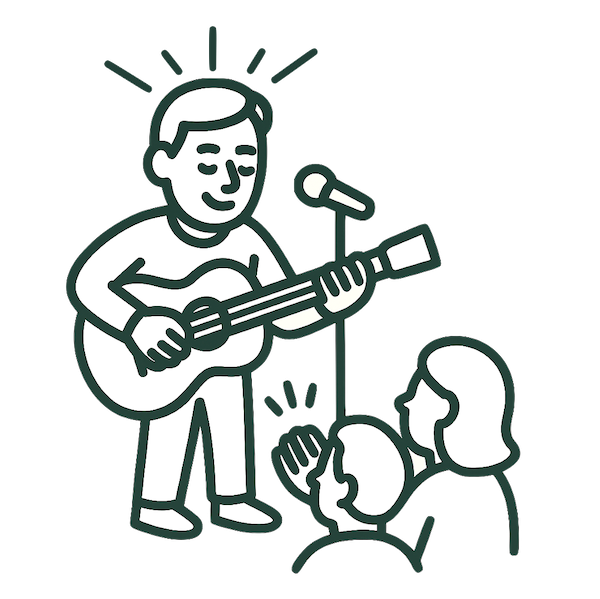What Truly Motivates You?
The rewards we seek are connected to the unique nature of the Performer Vibe.
Last week, I introduced the Performer Vibe and explained how it fits among the other vibes. The focus now is on what drives Performers.
Here’s a simple question to consider: What motivates you? What drives your actions, behaviors, and ideas?
It sounds straightforward, but a clear answer is hard to come by. Most of us feel motivated, but can’t easily explain why. As we’ll see below, motivation is often linked to rewards, and two kinds of rewards drive many of our motivations. Understanding them can reveal a lot about each of us, and especially the Performer vibe.
Seeking Rewards
As a species, we are wired to seek rewards like attention, sex, money, comfort, or a full belly. Our brains look for it, and it feels natural.
Some rewards are more personal, like the satisfaction of spending time doing something you love. The activity itself is the reward.
Other rewards are less personal and involve earning the reward of recognition, respect, and belonging. As social animals, we tend to crave social rewards.
As we’ll see, this difference will help us understand the Performer's experience.
Intrinsic vs Extrinsic
Picture an amateur musician at a local open mic night. They’ve been practicing for weeks, perfecting their songs.
Two types of motivation are driving our musician friend:
Intrinsic motivation: It’s personal. They love the sound of the chords, the feel of the guitar, and the satisfaction of bringing a song to life. Even if no one were listening, they’d still enjoy playing.
Extrinsic motivation: It comes from others. They want the crowd to cheer, other musicians to respect them, and maybe a video clip to go viral online. The reward here isn’t the act of playing itself, it’s the reaction or response it creates.
Both motivations can exist together, but for some people, one clearly outweighs the other, and that relates to their vibe. The Performer vibe is more oriented toward extrinsic motivation. They want to be seen.
What Motivates YOU?
Understanding the difference between intrinsic and extrinsic motivation isn’t difficult. Let’s look at a few examples. Consider how you’d answer these questions:
Why do you drive the car you drive?
Intrinsic - Because I love the feel of how it grips the road
Extrinsic - Because others will see it and appreciate my good taste
Most people are motivated by both. They love it personally and for what it says about them. But for some, the balance is tilted more toward being seen. That’s the Performer.
Let’s consider another question:
Why do you exercise?
Intrinsic - Because it feels good and makes me healthier
Extrinsic - Because others will notice how I look or be impressed by my efforts
Again, we see both personal and social rewards. The Performer may feel motivated by external outcomes of exercise: the recognition, the compliments, the sense of being seen as healthy. They enjoy the intrinsic benefits, but they matter less.
The Theory
In the 1970s and 80s, Edward Deci and Richard Ryan introduced Self-Determination Theory, which has become a dominant way to think about what motivates us.
Their work shows that intrinsic or personal motivation is connected to the three basic psychological needs:
Autonomy - Feeling in control
Competence - Feeling capable and effective
Relatedness - Feeling connected to others
People who fulfill these needs are often content and require less extrinsic motivation. They enjoy the applause, but what matters is doing the thing.
When those basic needs are not fulfilled, it can create anxiety and a feeling that something is missing. Imagine if our guitar player felt incompetent and unconnected to others. They might find that applause helps them fill that gap.
Self-Determination Theory helps explain why Performers, in particular, orient toward social and extrinsic rewards. When autonomy, competence, or relatedness feel shaky, applause, recognition, and belonging can provide a substitute source of energy. These rewards don’t replace intrinsic needs entirely, but they help Performers feel balanced, even if it means prioritizing social approval over personal satisfaction.
The Performer vs Analyst
We can also see this dichotomy in Vibes.
Consider a woodworker (Analyst vibe) happily working on complicated joinery while friends and family socialize. This activity serves their desire for autonomy and competence, which motivates them.
Performers aren’t as likely to be motivated by activities only they experience. In this example, a Performer might be motivated to show off the wordworking project at a county fair, where they can see its impact on others and feel the recognition directly.
This doesn’t mean Performers lack intrinsic drive; many love their craft deeply. However, in their balance of motives, social rewards are a powerful and motivating force and can feel intrinsic and deeply personal.
Performers in the Real World
You’ll likely come across Performers or see this vibe in yourself. We all have a bit of Performer in us.
Performers can feel performative, as if they’re trying to get attention or validation in a way that feels inauthentic. Their focus on social rewards can take over and can sometimes go too far.
When the Performer is at their best, intrinsic and extrinsic motivations are in sync. The social reaction they get is based on something real. The applause at the open mic comes because the musician authentically enjoys playing, and it shows.
Next Up:
We’ll consider the idea that we all have two versions of our lives: front stage and back stage, and how negotiating these relates to being a Performer.



